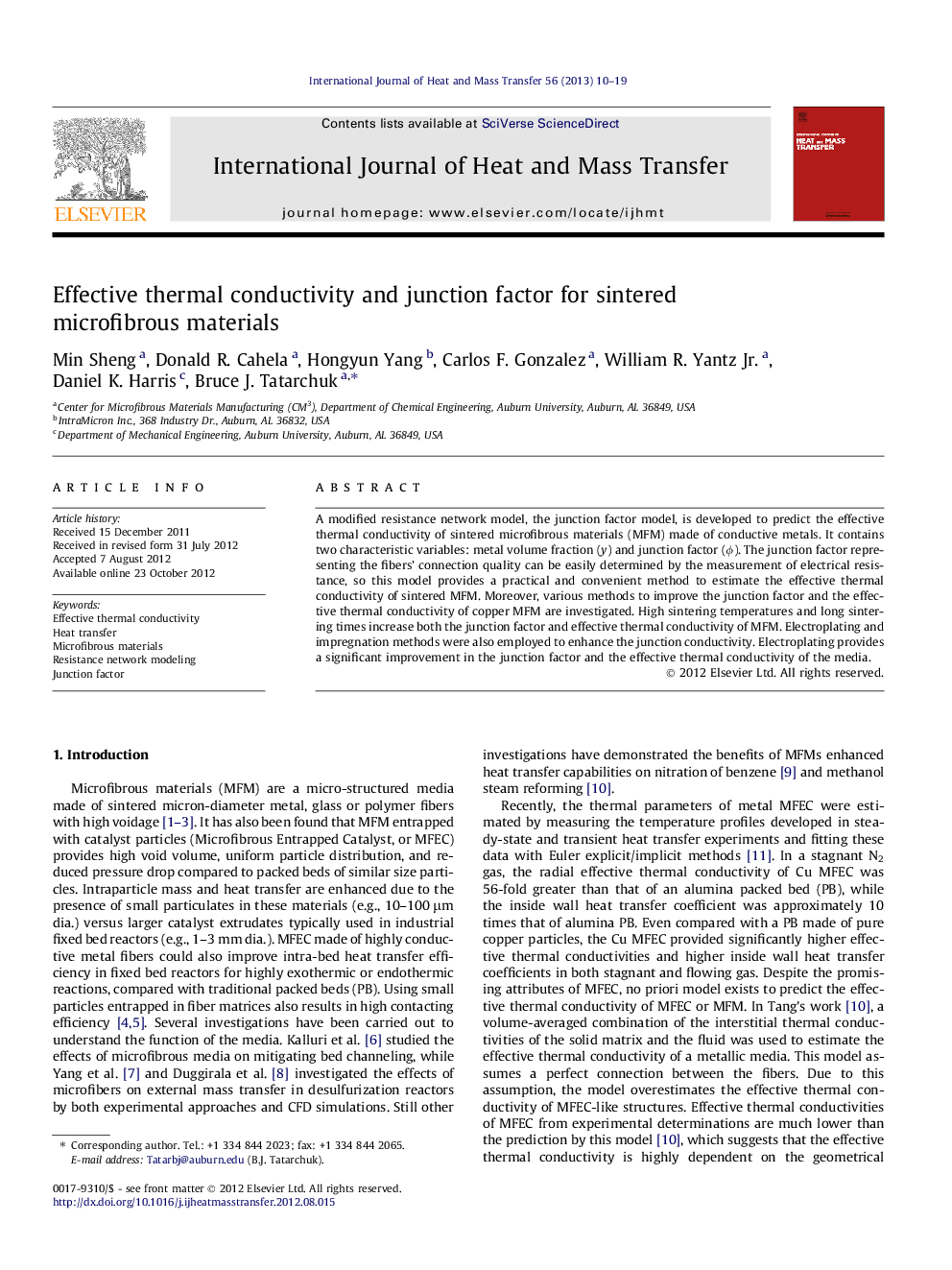| Article ID | Journal | Published Year | Pages | File Type |
|---|---|---|---|---|
| 658760 | International Journal of Heat and Mass Transfer | 2013 | 10 Pages |
Abstract
A modified resistance network model, the junction factor model, is developed to predict the effective thermal conductivity of sintered microfibrous materials (MFM) made of conductive metals. It contains two characteristic variables: metal volume fraction (y) and junction factor (Ï). The junction factor representing the fibers' connection quality can be easily determined by the measurement of electrical resistance, so this model provides a practical and convenient method to estimate the effective thermal conductivity of sintered MFM. Moreover, various methods to improve the junction factor and the effective thermal conductivity of copper MFM are investigated. High sintering temperatures and long sintering times increase both the junction factor and effective thermal conductivity of MFM. Electroplating and impregnation methods were also employed to enhance the junction conductivity. Electroplating provides a significant improvement in the junction factor and the effective thermal conductivity of the media.
Related Topics
Physical Sciences and Engineering
Chemical Engineering
Fluid Flow and Transfer Processes
Authors
Min Sheng, Donald R. Cahela, Hongyun Yang, Carlos F. Gonzalez, William R. Jr., Daniel K. Harris, Bruce J. Tatarchuk,
